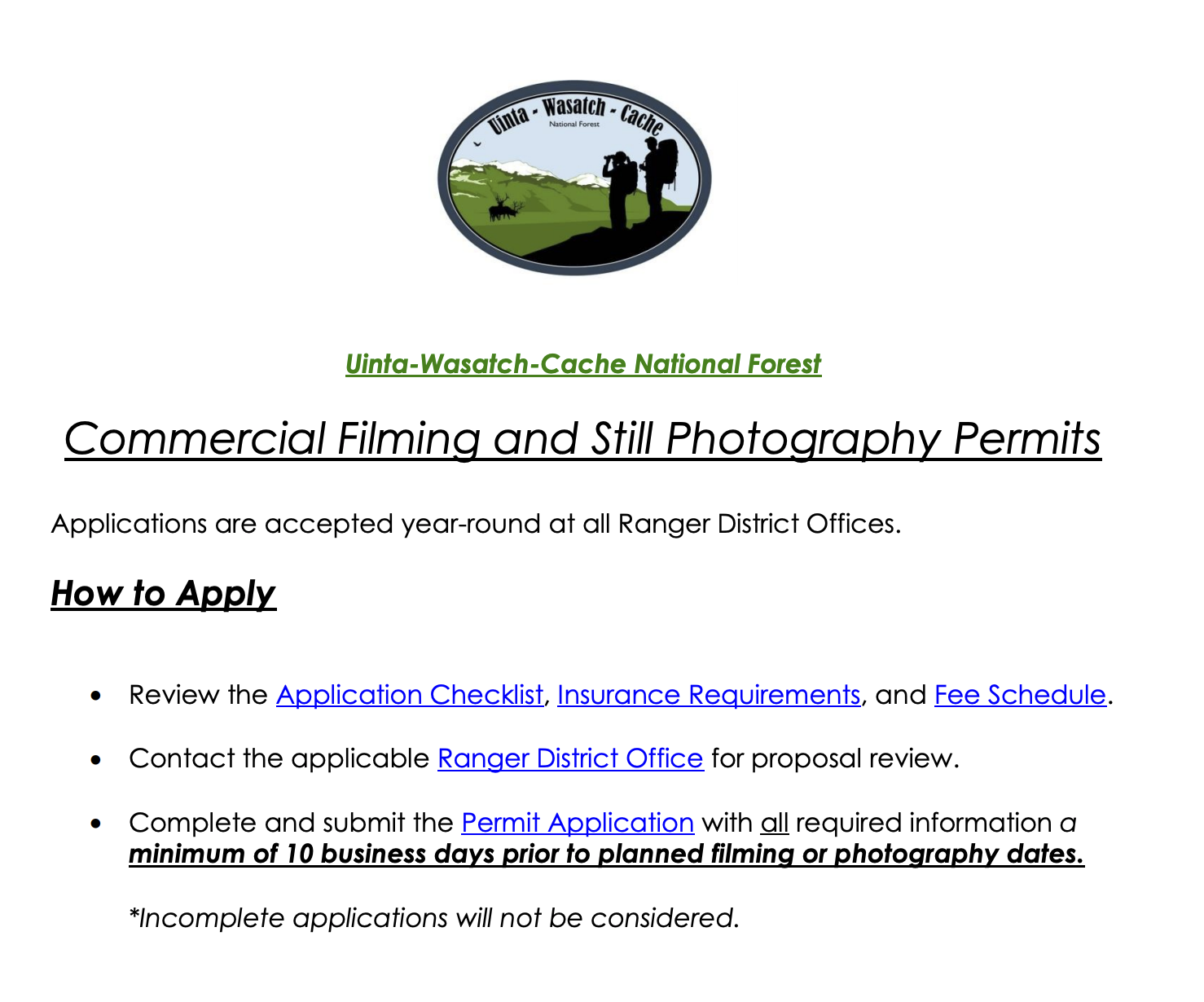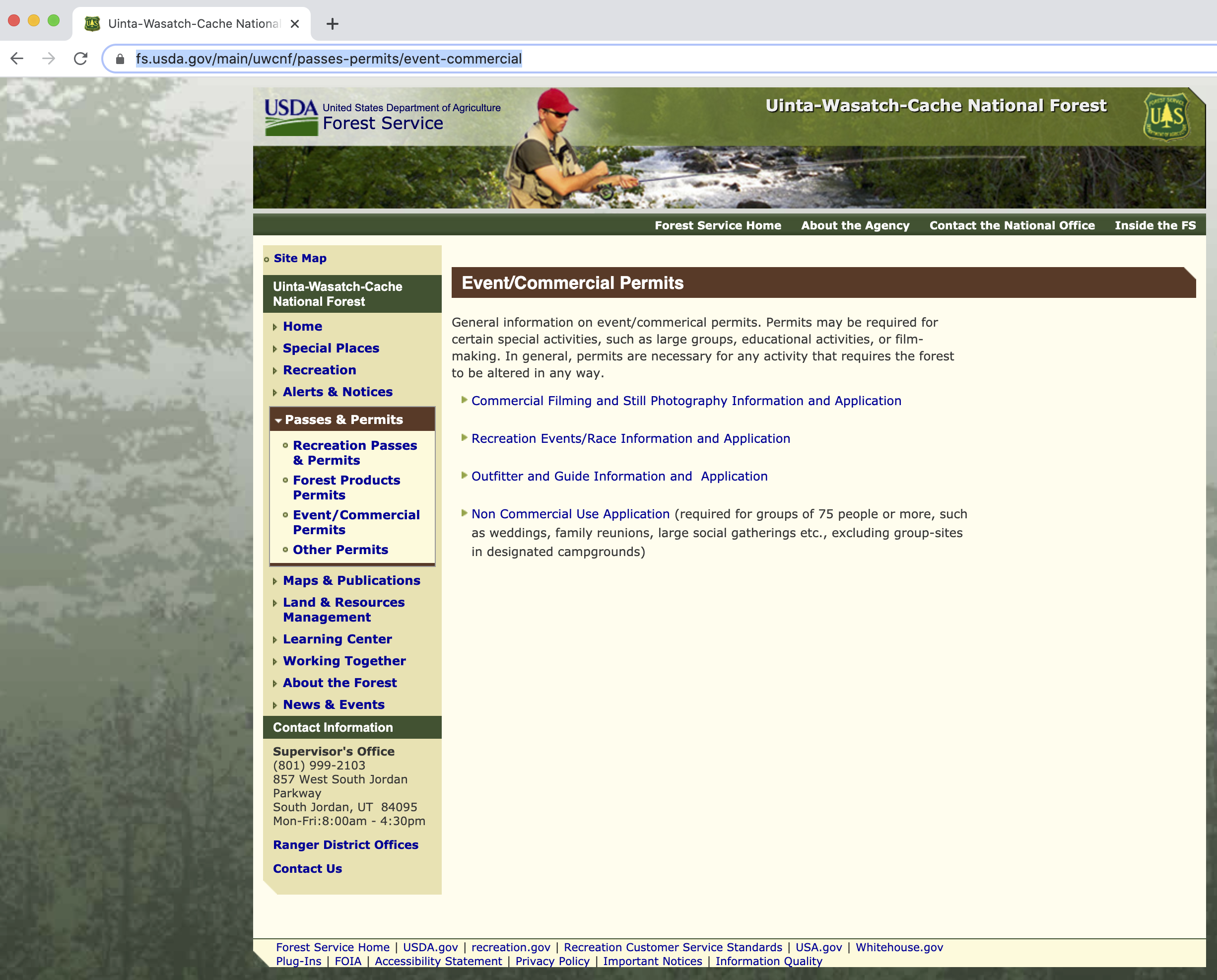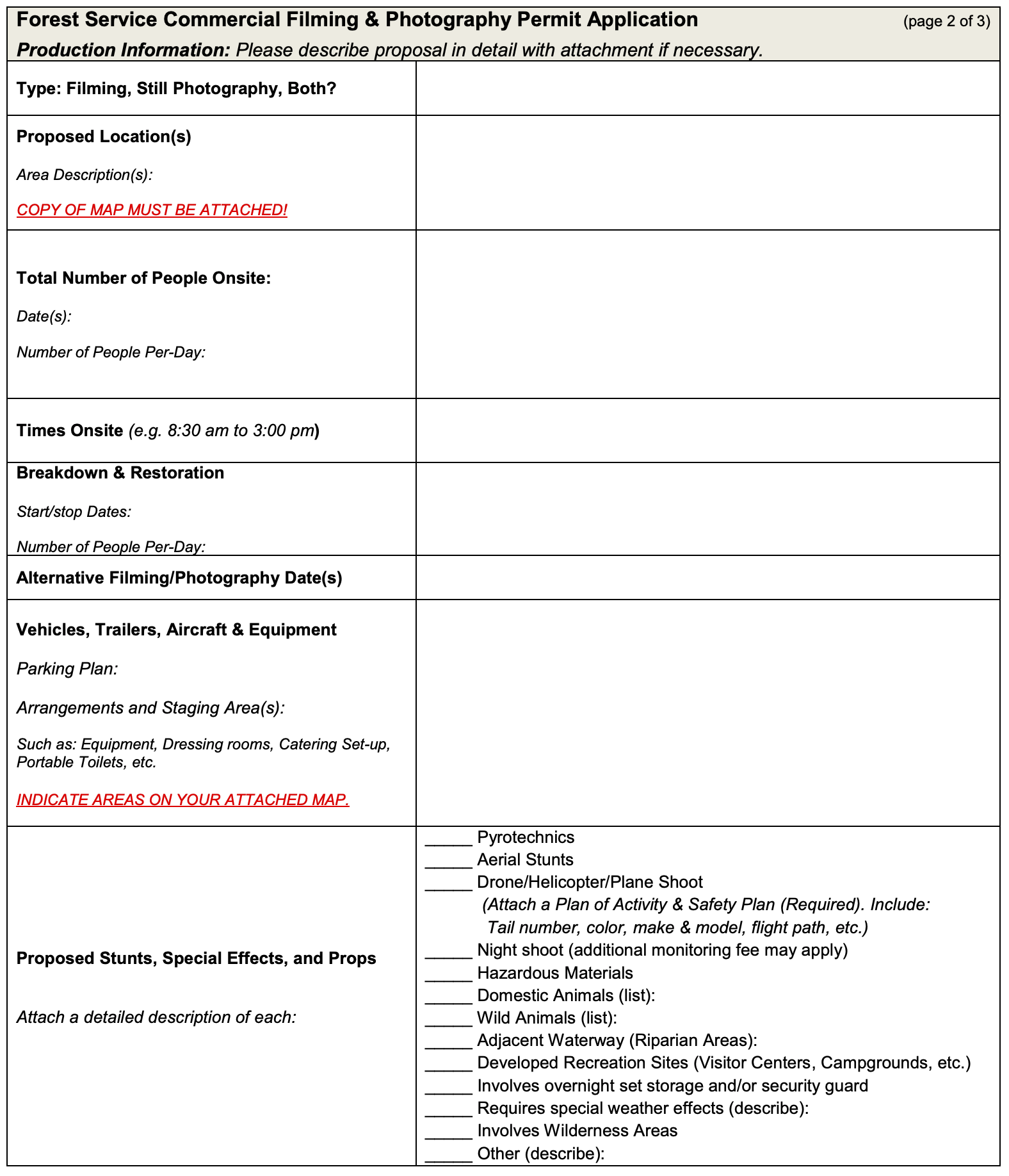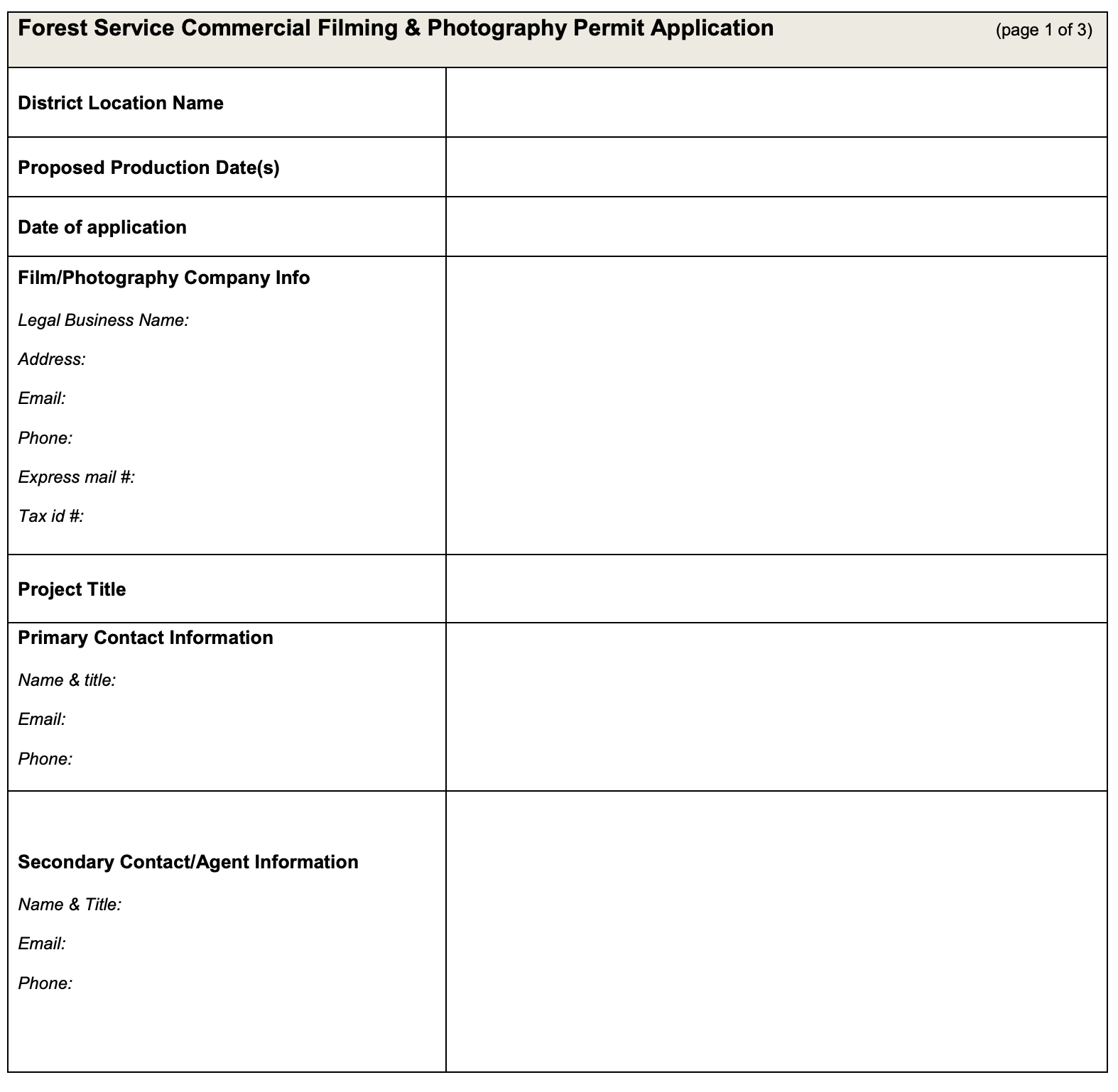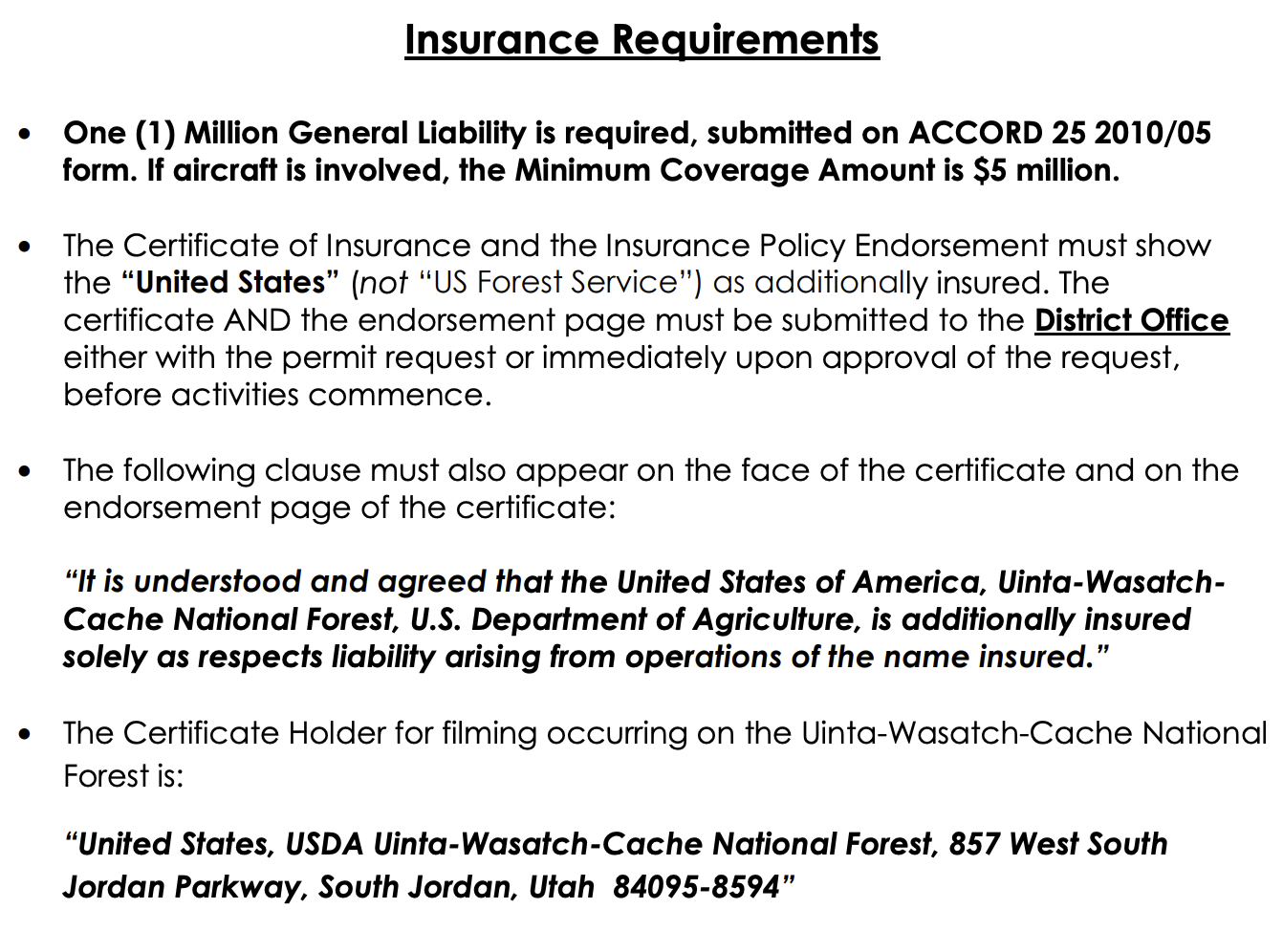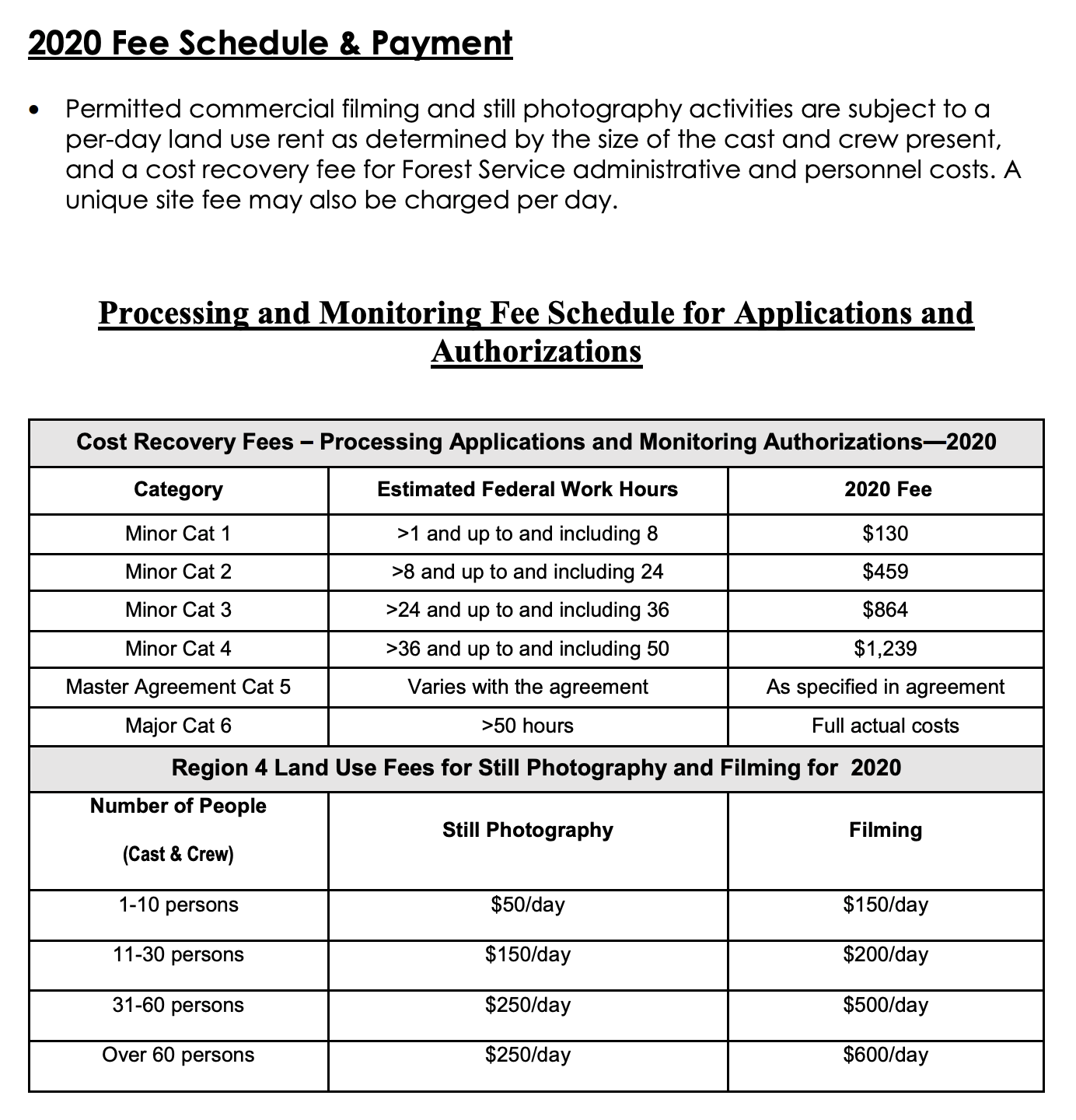Photo Permits? Do you need them?
Do you need photo permits?
YES. Anytime you’re photographing or filming on public lands for commercial use you need to acquire a permit. I.e. if someone is paying you to shoot photos or video on public lands then you need a permit.
Below is a breakdown of the photo/film permit process, some FAQ’s on permits, etc.
When do I need a permit? Anytime you're photographing or filming on public lands for commercial work, you need a permit. Most public lands consist of Forest Service, BLM and State lands. Each of these land types are managed by different government agencies thus if you’re planning to do a project on Forest Service, BLM and State land, then you need to get 3 permits. One for each land type. It’s a pain. It can be expensive. It’s necessary.
Where do I get a permit? First, determine where and what land type you’ll be doing your project on. Then reach out to whatever government agency manages that land. (Forest Service, BLM or State). A simple internet search of ‘Photo permit in XYZ forest’ or ‘BLM photo permit for XYZ State’ should steer you in the right direction for the next steps. For example, I did an internet search for ‘Wasatch National Forest Photo Permit’ in Utah. The first link provided was this one: https://www.fs.usda.gov/main/uwcnf/passes-permits/event-commercial
How do I get a permit? From here, you’ll review the Application Checklist, Insurance Requirements and Fee Schedule. This information can usually be found online. Then you’ll contact the applicable ranger district for a proposal review. Once they give you the green light, you’ll fill out the permit application and submit for review. Once approved, you’ll pay the government agency, they’ll formally issue you your permit and you’re good to go!
I’ve been getting permits for both photo and film work for the last 10 years. It’s a fairly straight forward process but there’s a lot of steps and it takes time. Below is a list of helpful tips and suggestions that’ll help speed up the permitting process for you.
I would advise that you start the process of acquiring a permit 6-8 weeks prior to your project.
When you submit your film permit application you’ll need to provide a map with an outline of the area you’ll be working. I use onXhunt, draw a line around the area I’ll be doing the project then take a screen shot and provide that in my application. Most government agencies accept this. Some, however, want you to list the county, township, and range of each square mile you’ll be in. That can be a serious pain!
You’ll need to provide proof of insurance in your application stating that XYZ gov agency and ’The United States’ is insured to prevent someone from suing them. The exact verbiage can be found under the ‘Insurance Requirements’ page on the application.
My business insurance company, TCP Insurance, provides me a ‘proof of insurance form’ each time I get a permit.
Most government agencies are used to receiving permit applications from Hollywood where they’ll be 50+ people there for the shoot, pyrotechnics involved, road closures, etc. Be sure to explain exactly what you’re doing in your permit application so they know your project is going to be very low impact.
Permits range from $50 to $200/day. Sometimes more. I recently shot a 6 day project on public lands and the permit cost was $1,600. Be sure your client pays for the permit. You don't want that expense coming out of your pocket.
Many photographers/filmers don't get permits. However, government agency will come after folks who aren’t getting permits and who are clearly working on public lands. This could be detrimental to your business and damage your relationship with your clients who are no longer able to use the photo/video assets you created for them. Is it work the risk?
Generally speaking you can NOT get a permit for wilderness areas. Areas that allow projects to happen in wilderness areas usually require additional screening and $. If I’m doing a project near wilderness, I’ll state in the application that I will not be working in the wilderness are. This speeds up the application process.
Don’t hate on folks who shoot projects on private land. Think of the time/$ they save not having to deal with permits!
When you get a permit, all the information goes into a publicly accessible online database. It shows who/where/when/etc. about the permit. So if you’re getting a permit to go photo/film in your favorite hunting spot, and you show a big deer/elk, you’re giving away valuable information to internet savvy hunters.

